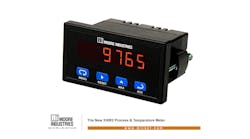The U.S. Environmental Protection Agency (EPA) is issuing final rules designed to protect Americans’ health by cutting emissions of mercury, particle pollution and other harmful pollutants from Portland cement manufacturing, the third-largest source of mercury air emissions in the United States. The rules are expected to yield $7 to $19 in public health benefits for every dollar in costs.
This action sets the nation’s first limits on mercury air emissions from existing cement kilns, strengthens the limits for new kilns, and sets emission limits that will reduce acid gases. This final action also limits particle pollution from new and existing kilns, and sets new-kiln limits for particle and smog-forming nitrogen oxides and sulfur dioxide.
When fully implemented in 2013, EPA estimates the annual emissions will be reduced:
· Mercury – 16,600 pounds or 92 percent
· Total hydrocarbons – 10,600 tons or 83 percent
· Particulate Matter – 11,500 tons or 92 percent
· Acid gases – (measured as hydrochloric acid): 5,800 tons or 97 percent
· Sulfur dioxide (SO2)– 110,000 tons or 78 percent
· Nitrogen oxides (NOx) – 6,600 tons or 5 percent
Mercury in the air eventually deposits into water, where it changes into methylmercury, a toxic form that builds up in fish. People are primarily exposed to mercury by eating contaminated fish. Because the developing fetus is the most sensitive to the toxic effects of methylmercury, women of childbearing age and children are regarded as the populations of greatest concern.
EPA estimates that the rules will yield $6.7 billion to $18 billion in health and environmental benefits, with costs estimated at $926 million to $950 million annually in 2013.
For more information, visit www.epa.gov/ttn/oarpg/t3pfpr.html.
Continue Reading
Continue Reading

